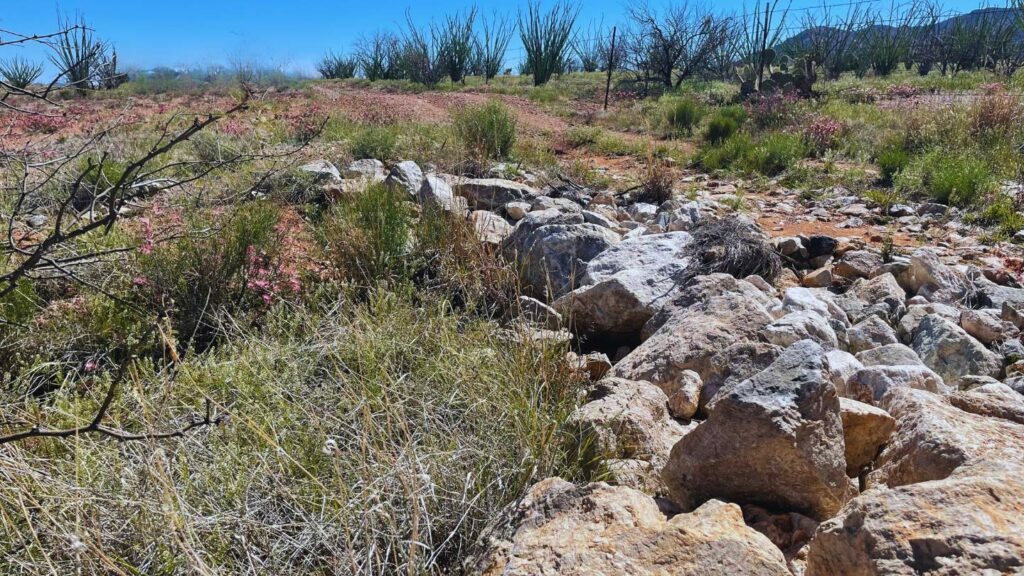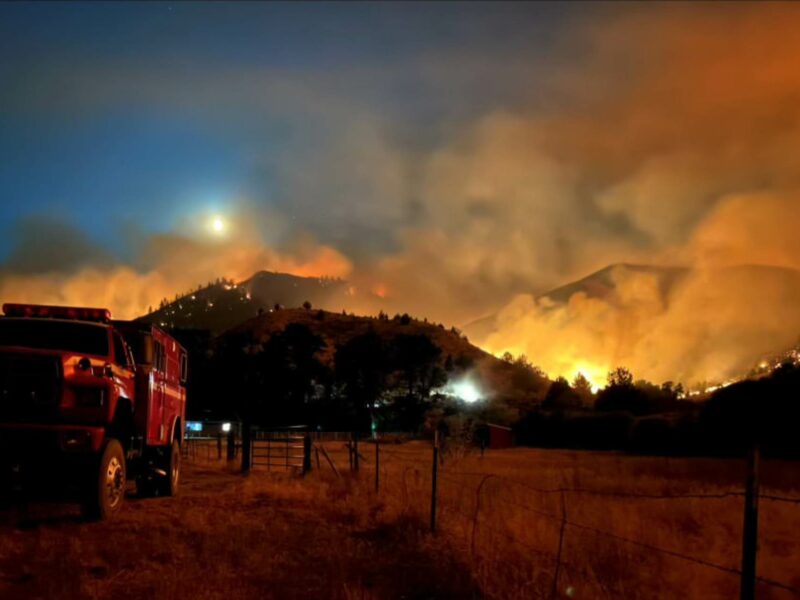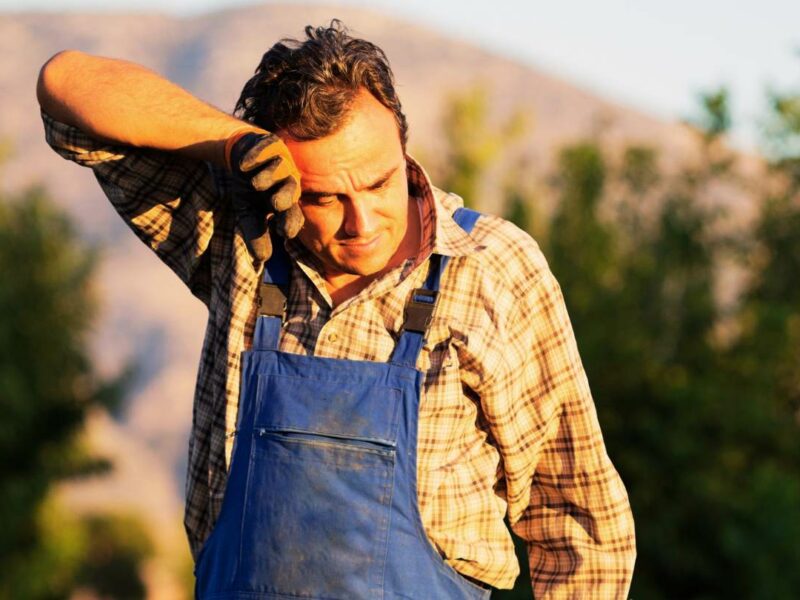A few weeks ago, I visited several ranches west of Tucson, with a group of conservationists on a conference field trip. In the dry desert air of the Altar Valley, I was clearly out of my element. My splotchy forearms itched from the heat. I could feel my neck and ears, pitifully unprotected by my sweaty ballcap, burning in the merciless sun. And it was only 80 degrees on a beautiful early April day!
Sarah King, of the King Anvil Ranch and executive director of the Altar Valley Conservation Alliance (AVCA), and Mary Miller, of the Elkhorn Ranch, were both sensibly dressed in light, long sleeve button downs and wide-brimmed straw hats. They know how to survive, even thrive, here.
We stopped at the King Anvil first, where I encountered the Altar Wash in person for the first time. I recalled a phone call with King in 2021, when she was on the founding advisory board of this magazine, in which I had blithely asked if her ranch was along the Altar River. Oh, there is no Altar River, she patiently answered. We have the wash; it’s an old wagon road that got downcut in a flash flood in 1904, after a series of very bad drought years.
So I was not prepared for the size of the Altar Wash. Where it cuts through the King Anvil, it is as wide as a line of four station wagons, and deep enough that if you drove one off the side, it’d fall a little ways before burying its hood in the rough sand bed. King family history maintains that before the flood and the downcut, you could walk a horse ahead of a monsoon flood in the valley, the water slowly spreading between the bunch grass.

King family history maintains that before the flood and the downcut, you could walk a horse ahead of a monsoon flood in the valley, the water slowly spreading between the bunch grass.
AVCA and its partners, including the Elkhorn Ranch, have taken on the monumental task of restoring that vitality, despite the wound that scars their homeland. On the Elkhorn, Miller showed us the tools they are using.
In 2011, Miller explained, they teamed up with Bill Zeedyk to install some of the restoration designs that sometimes bear his name (“Zeedyk structures”). Crescent moon-shaped “media lunas”, one rock high, were placed across the slope and at the heads of channels to slow and spread water. Small check dams and baffles were added within channels to slow water, create meanders and catch sediment. The team set up test plots where different combinations of each treatment were installed to see what worked best. Photo monitoring points helped track progress. They published a ten-year analysis in 2022.
The results are striking, but the monitoring showed that restoration in the area takes time. After two years, vegetation recovery was uncertain. But after 10, in-channel structures had doubled the vegetation nearby. The native plants are building the soil, cooling the air, spreading the monsoon runoff and sheltering birds, bees, bats and more.
The best news is that the lessons learned from this patient study are being applied on a much broader scale in the Altar Wash starting now. A multi-million dollar grant from the Bureau of Reclamation will allow AVCA and its partners to install hundreds, perhaps thousands, of these structures at key locations throughout the valley in the coming years. I can’t wait to return, this time in long sleeves and a wide-brimmed hat, to see the transformation in 2034.





